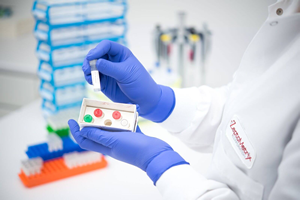ZeptoMetrix NATTROL™ MOLECULAR CONTROLS
Globally, millions of people are tested for infectious diseases every year. The implications of reporting either a false positive or a false negative can be devastating to the patient. Accurate and sensitive diagnostics are necessary to confirm that laboratories are providing patients with proper testing results.
Utilizing ZeptoMetrix® NATtrol™ Controls on a consistent basis helps to monitor testing performance and provides additional confidence in the quality and reliability of laboratory operations.
NATtrol™ (Nucleic Acid Testing Control) products are the industry’s preferred standard for molecular diagnostics testing and can be used as independent (third party) quality control materials. NATtrol™ products are prepared from purified microorganisms that are grown in either cell culture, microbial culture or isolated from the plasma of infected individuals.
The NATtrol™ treatment modifies the surface proteins and renders the organisms non-infectious and refrigerator stable, while retaining the complete genome. The inactivation of organisms is verified by absence of growth in either validated tissue culture-based infectivity assays or in validated growth protocols (as applicable)
- Non-infectious and refrigerator stable
- Mimics a true patient sample
- Purified, intact, non-synthetic whole organisms
- Full process controls to monitor extraction and amplification steps
- Available in different formats (single or multiple analytes)
- Can be used across various molecular testing platforms and assays
- Traceable to WHO International Standards (where available)
- 12-24 months shelf life
- Broad patent coverage* and/or pending patents
Frequent use of NATtrol™ Controls may be used to:
- Train and monitor laboratory personnel
- Evaluate lot-to-lot consistency of test kits and assay reagents
- Monitor daily variations in reported results
- Provide unbiased, independent testing proficiency Assessment
- Provide consistent, reliable and accurate Quality Control solutions
- Assist in identifying laboratory trends



